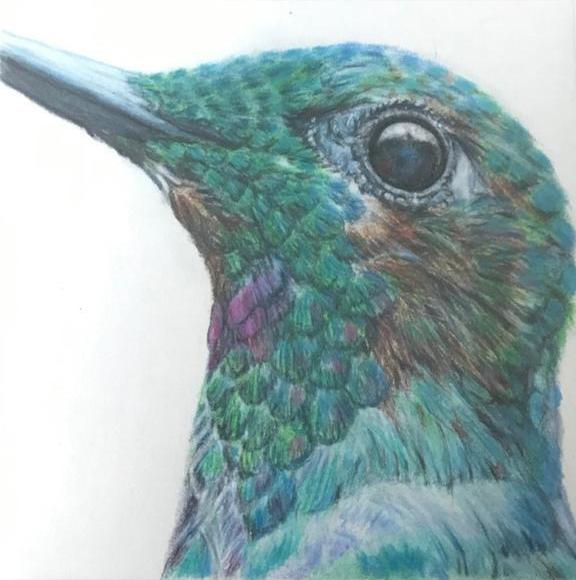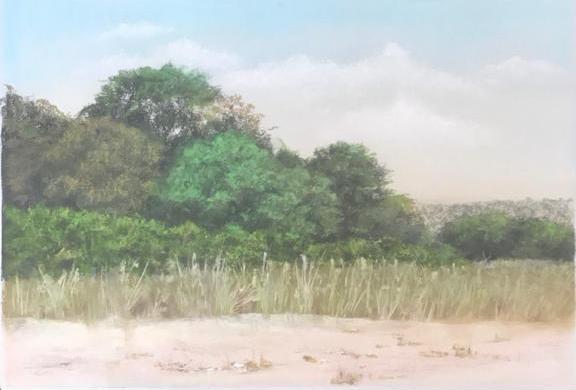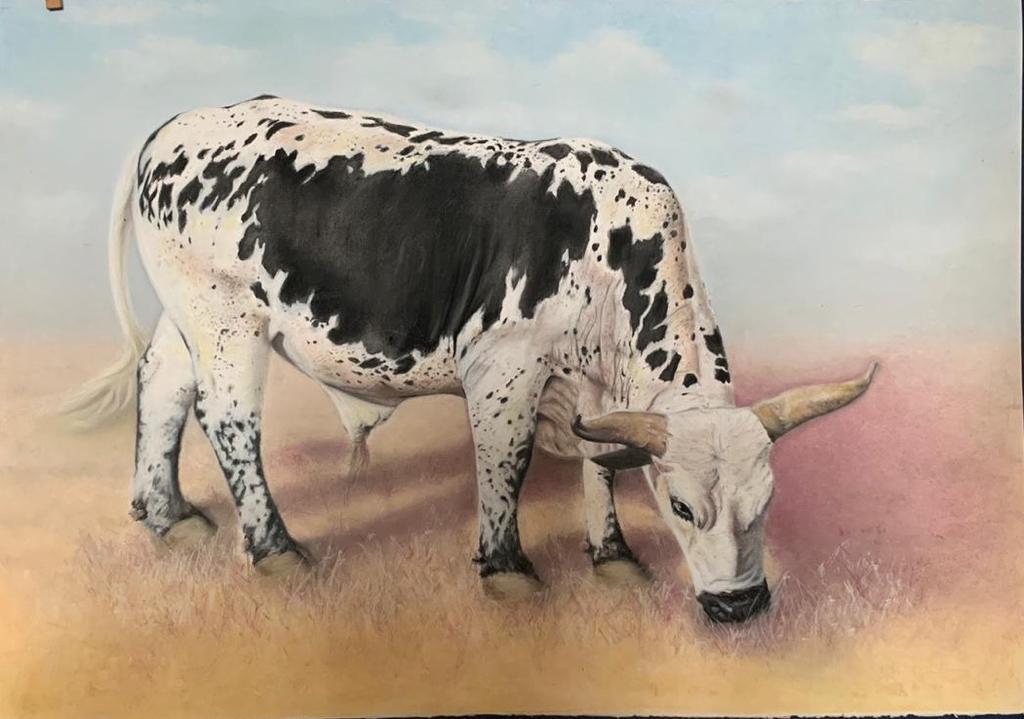AugustList of articles - click on the icons below and you will be redirected to the page where the article is published
0 Comments
by Rev Reingard Knausenberger Each month one of these world views will be expanded.
Materialism The importance of our daily experiences with the material aspect of the world is obvious and cannot be dismissed. Yet ‘materialism’ as a defined world-view is relatively recent, appearing only in modern times and taking centre stage in the 19th century. Mathematism has captured some of its domain in the meantime, as has dynamism, especially where it becomes the working theory for research. No doubt, materialism in its practical form is also permeating ever wider areas of our daily life. Something which the current pandemic is highlighting clearly, is how materialism is also occupying our soul life, often intrusively. It shows up particularly now how problematic it can be to generalise one world view over others as the guiding principle for everything else. It is worthwhile noticing in the composition of the twelve world-views the dynamic of being in this ‘symphony’, and that its polar opposite world-view creates a tension and possibility that opens up new insights and experiences, enhancing each other. Every human being born into an earthly body is immediately confronted with the corporal density and ‘hardness’ and impenetrability of matter. Its compact space-filling capacity and stability is astounding, like the characteristic feature of always being ‘surface’, an outside, never showing ‘inside’. Cut a tree, cut stone as many times as you like, dig as deep as you can, you always only encounter only new surfaces. This could be why ultimately materialism on its own will produce hunger, a sense of deficit and unfulfilled-ness. This discovery was also the first experience of Christ Jesus as he began ‘coming into himself’ 40 days later in the desert after the overwhelming experience of the baptism in the Jordan. The rulers of the earth, the spirits of resistance, the master of densifying, faced him: ‘If you are the Son of God, then turn these stones into bread’. And the truthful answer is: ‘The human being does not live by bread alone.’ Acknowledging that ‘stones’ have their place and purpose, but are not everything. This aspect belongs to the mainstream of Christ’s life and deed on earth, and is the underlying theme of the Christian path: penetrating the mystery of matter and corporality. What gives life, nourishes, builds from the inside out a stability of being? In John chapter 6 Christ has shown in the feeding of the 5,000 a first answer, but then wrestles with the non-understanding of the people around him, and with the disciples for comprehension: what manifests physically is first a spiritual manifesting activity. In the end, in the Last Supper, Christ makes bread to be his body. This presents us with the ultimate riddle of the spiritual-physical, birthed from the womb of matter. The materialistic world view will say: this is phantasy, while using ‘stones: money and things’ to create bread only to be hungry again. The spiritualist will say: it needs the rest of our earthly evolution to unlock this mystery in conscious human comprehension and to become creators of this ability to manifest living Spirit in matter and the laws of matter in Spirit reality. Materialism has its rightful place as a valid world view, necessary on our human journey to achieve who we can potentially be. by Julian Holtz
An Angel is a heavenly being and therefore to see it requires a flight in the heights. Julian Holtz took his drone into the sky above our property to share the view that is possible only from above. by Fourways Gardens journalist Francesca Beattie Ana Lampen was interviewed for the Fourways Gardens Residential Estate Magazine for July 2020. Here is the article with photos. Ana Lampen captures the essence of her subjects within her portraits. Here are the responses to our interview questions. Brief biography: where/how/when did you start? I have always had a love of art. I didn’t actually do art in school, and when I went to university, I was ‘encouraged’ (persuaded) to go into the science field. That didn’t work out and I eventually summoned the courage to do art. I studied Fine Art many years ago, majoring in sculpture and printmaking. I did a bit of ceramics during this time too. I then took a break from art as I started a family, and became a full- time mom and housewife, and also assisted my husband in starting his business. For the next 20 years, I did very little in the field of art, although I found various creative outlets in doing odds and ends around the house (sewing, embroidery, knitting pillowcases and carpets, and even made a few lampshades!), but I always had the intention of taking it up again. Your journey in art: how did you develop your style? How did it evolve? I am not quite sure what my style is yet, I’m working on it! After such a long time of not being able to focus or work on my art full time, when I did decide to dedicate some time to it and to start working at it again, I started by attending some courses and lessons to hone and develop my skills, as well as to learn to work with new techniques, subject matter and mediums. I was particularly interested in working in colour and doing detailed work (as I hadn’t done this before), so I did a bit of water colour, a bit of calligraphy, and then started colour pencil classes with Pearl de Chalain (pearIdechaIaingmaiI.com), who also lives in Fourways Gardens. I fell in love with working with colour and detailed pencil work. Where do you exhibit your work? In the house and to my family mostly! What are you currently working on? I’m currently doing a lot of animal portraits in colour pencils. Your future goals/wish list: I would love to be able to work on my art full time and to extend my work to do oil paintings and more gestural pieces. What inspires you? The sky, nature and silence. Your favourite subjects and medium(s)? My favourite subject is portraiture - attempting to capture the essence of a person within an artwork Currently I am doing a lot of work using coloured pencils, but I also love working with charcoal (my old favourite) and pastels, and I can’t wait to start working in oils. Your favourite technique(s)? I love the layering required when working with coloured pencils. Putting layers down, taking them off, and building your layers and colours like that. Detailed pencil work requires a lot of layering and you can have up to 20 layers before you get the right colour! Which other artists’ work do you enjoy? I love Wim Botha, Willem Boshoff and, of course, William Kentridge. My favourite portrait artists are Candace Charlton and Kern Evans. Tips and advice on the use/working in your favourite medium: Choose a good picture to work from, good quality paper and colour-fast pencils, and then have a lot of patience! General/useful tips from your experience for aspirant artists: The process and journey of creating art is a very individual one and experienced differently. You have to love art, to have a passion for it, as well as to have a lot of patience and perseverance! Are you willing to accept commissions? Absolutely! Where can you be contacted?
I can be contacted on my email [email protected]. I am also in the process of setting up a Facebook page, coming soon! In Class 11 at Michael Mount Waldorf School, and in Class 12 in most other Waldorf Schools, the student takes on a project consisting of a practical and a theoretical component and spends all year together with mentors developing their idea and components. This project is then presented to the school community. Julian Holtz is learning to understand the principles of flying and the skill of paragliding. He spent time in the Drakensberg in July learning the skills.
by Eva Knausenberger
I would like to quote once more from the Samaritan Course by Rudolf Steiner (GA 157) three aspects, which at the time were almost prophetic words, that have now become a reality we can observe: Wounds will no longer heal by themselves; we must engage the will to heal in order to heal. In other words, masks, immunisations, isolation, medicines are not enough to heal the wounds created by the Corona virus. Around the wound gather two opposing forces: Healing forces and also forces in opposition to healing. Both of these will in the future become much stronger. If/when however, we take into ourselves the power of the Healing Spirit, we will be able to handle them (know, observe, deal with them) consciously. In my estimation none of us is immune to the virus. It has for a long time already infected the life-forces (etheric life forces) of the planet and is now increasingly infecting/attacking the living fabric of our humanity. We can see that it turns people against one another, nations against nations in the fight against an invisible enemy. These I would call the forces working in opposition to healing, which grow day by day. But illness can only settle where the healthy fabric, the life forces (the immune system) is already wounded, and in this we are truly all together. It has been for me a most wonderful and healing experience to witness how members of our Christian Community world-wide and the Johannesburg community in particular have used a healing spirituality to communicate and be with one another. by James Sleigh
James Sleigh describes the founding of the Camphill Movement in 1940 in Aberdeen by a group of women as the men, all foreigners, had been rounded up and interned on the Isle of Man. He describes Renate, his mother, carrying the seed of Camphill, together with other strong women, into Southern Africa. The article with photos appeared in the June 2020 newsletter of Camphill Village West Coast. by Michaela Glöckler of ELIANT ([email protected])
Sebastian P. Suggate and Philipp Martzog professors of school education at the University of Regensburg, have researched and been able to prove that the capacity of children to form mental images is negatively influenced by the use of screen media. The results were published in the April 2020 edition of Developmental Science, the leading journal in the field of developmental psychology/educational psychology. They demonstrated the extent to which the development of a healthy thinking capacity in children is dependent on learning through sensorimotor activity. 266 children aged between three and nine years were investigated at an interval of ten months. 'Mental imagery' or the capacity to form mental images was significantly reduced by dependency on screen time. The researchers found that the ability to form mental images which is so fundamental to thinking, rests on two pillars – the active forming of images and a richness of sensorimotor experience. Because screen media provides them ready made, children have no need to form their own mental images. The capacity to form their own concepts is thereby repressed. There is in addition virtually no sensorimotor activity involved in sitting before a screen. These highly significant results show that the more screen time a child is subjected to the less able it is to form mental images. Since screen time has been massively increased as a result of the Corona pandemic and not only at home but also in the school context, we need urgently to reflect on the burden we are placing on our children – particularly during their first nine years. This is the period when the sensorimotor skills and the accompanying brain capacities are developed. |
Articles Archives
December 2020
2023 - January to December
2022 - January to December 2021 = January to December 2019 - January to December 2018 - January to December 2017 - January to December 2016 - January to December 2015 - January to December 2014 - November & December 2013 - July to December 2013 - January to June 2012 - April to December Send us your photos of community events.
Articles (prefaced by month number)
All
|






























 RSS Feed
RSS Feed